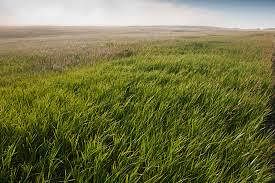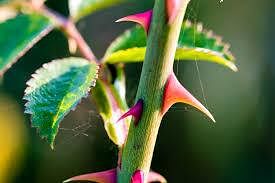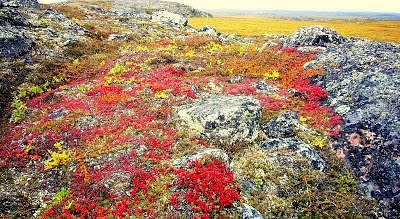Class 7 Exam > Class 7 Notes > Short Notes - Natural Vegetation and Wildlife
Class 7 Geography Chapter 5 Notes - Natural Vegetation and Wildlife
What is Natural Vegetation?
Natural vegetation is the plant life of a region.
- Natural vegetation is of three types: forest, grasslands and shrubs.
- The changes in the type of natural vegetation mainly occur because of the changes in the climate region.
Forests
- Forests are of six types: Tropical Evergreen, Tropical Deciduous, Temperate Evergreen, Temperate Decidous, Mediterranean, Vegetation, and Coniferous forests.
- Tropical Evergreen Forests are those which occur in the region near the equator and close to the tropics.
- Tropical Decidous Forests are monsoon forests which shed their leaves in the dry season to conserve water.
 Forest
Forest - Temperate Evergreen Forests are located in mid-latitudinal coastal region.
- Temperate Deciduous Forests are those which shed their leaves in the dry season.
- Meditteranean Vegetation is found around Mediterranean Sea in Europe.
- Coniferous Forests are found in areas along with the Taiga.
Question for Short Notes - Natural Vegetation and WildlifeTry yourself:In which season do plants shed their leaves in temperate deciduous forests?
View Solution
Tropical Evergreen Forests
- Tropical Evergreen forests are also called tropical rainforests.
- These thick forests occur in the regions near the equator and close to the tropics.
- These regions are hot and receive heavy rainfall throughout the year.
- As there is no dry season, the trees do not shed their leaves. This is the reason they are called evergreen.
- The thick canopies of the closely spaced trees do not allow the sunlight to penetrate inside the forest even in the daytime.
- Hardwood trees like rosewood, ebony, mahogany are common here.
Tropical Deciduous Forests
- Tropical deciduous are the monsoon forests found in the large part of India, northern Australia and in Central America.
- These regions experience seasonal changes.
- Trees shed their leaves in the dry season to conserve water.
- The hardwood trees found in these forests are sal, teak, neem and shisham which are used to make furniture, transport and constructional materials.
- Tigers, lions, elephants, langoors and monkeys are the common animals of these regions.
Temperate Evergreen Forests
- The temperate evergreen forests are located in the mid latitudinal coastal region.
- They are commonly found along the eastern margin of the continents, e.g., In south-east USA, South China and in South-East Brazil.
- They comprise both hard and softwood trees like oak, pine, eucalyptus, etc.
Question for Short Notes - Natural Vegetation and WildlifeTry yourself:Tropical evergreen forests are also called ______.
View Solution
Temperate Deciduous Forests
- Temperate Deciduous forests are found towards higher latitudes.
- These are found in the northeastern part of USA, China, New Zealand, Chile and also found in the coastal regions of Western Europe.
- They shed their leaves in the dry season.
- The common trees are oak, ash, beech, etc.
- Deer, foxes, wolves are the animals commonly found. Birds like pheasants, monals are also found here.
Mediterranean Vegetation
- The west and south-west margins of the continents are covered with Mediterranean vegetation.
- It is mostly found in the areas around the Mediterranean sea in Europe, Africa and Asia.
- This kind of vegetation is also found outside the actual Mediterranean region in California in the USA, south-west Africa, southwestern South America and Southwest Australia.
- Citrus fruits such as oranges, figs, olives and grapes are commonly cultivated here.
Coniferous Forests
- In the higher latitudes of Northern hemisphere, the spectacular Coniferous forests are found.
- These are also called Taiga.
- These forests are also seen in the higher altitudes.
- Chir, pine, cedar is the important variety of trees in these forests.
- Silver fox, mink, polar bear are the common animals found here.
Grasslands
- Tropical grasslands: These occur on either side of the equator and extend till the tropics. This vegetation grows in areas of moderate to a low amount of rainfall. Elephants, zebras, giraffes, deer, leopards are common in tropical grasslands.
- Temperate grasslands: These are found in the mid latitudinal zones and in the interior part of the continents. Wild buffaloes, bison, antelopes are common in the temperate region.
 Grassland
Grassland - Thorny Bushes: Thorny bushes are found in dry desert-like regions. These are found in areas with scanty rain and scorching heat.
 Thorny Bushes
Thorny Bushes - Tundra Vegetation: Tundra vegetation growth of natural vegetation is very limited here. It is found in polar areas.
 Tundra Vegetation
Tundra Vegetation
FAQs on Class 7 Geography Chapter 5 Notes - Natural Vegetation and Wildlife
| 1. What is natural vegetation? |  |
Ans. Natural vegetation refers to the plant life that grows naturally in a particular region without human intervention. It includes forests, grasslands, deserts, and other types of vegetation that are found in different regions of the world.
| 2. What are the different types of natural vegetation? |  |
Ans. The different types of natural vegetation are forests, grasslands, deserts, tundra, and aquatic vegetation. Each type of vegetation has its unique characteristics, and they grow in different regions of the world based on climatic conditions and other factors.
| 3. What is the importance of natural vegetation? |  |
Ans. Natural vegetation is essential for maintaining the ecological balance of the planet. It helps in regulating the climate, water cycle, and soil erosion. It also provides habitat for wildlife and other organisms and serves as a source of food, medicine, and other resources for humans.
| 4. How does human intervention affect natural vegetation? |  |
Ans. Human intervention, such as deforestation, urbanization, and agriculture, can have a significant impact on natural vegetation. It can lead to loss of biodiversity, soil erosion, and climate change. Human activities can also result in the extinction of plant and animal species and disrupt the ecological balance of the planet.
| 5. What are the measures that can be taken to conserve natural vegetation? |  |
Ans. Measures such as afforestation, reforestation, conservation of wetlands, and sustainable agriculture can help in conserving natural vegetation. Governments, organizations, and individuals can take steps to reduce deforestation, promote sustainable land use practices, and protect wildlife habitats to preserve natural vegetation.
Download as PDF

|
Explore Courses for Class 7 exam
|

|
Signup for Free!
Signup to see your scores go up within 7 days! Learn & Practice with 1000+ FREE Notes, Videos & Tests.
Related Searches






















